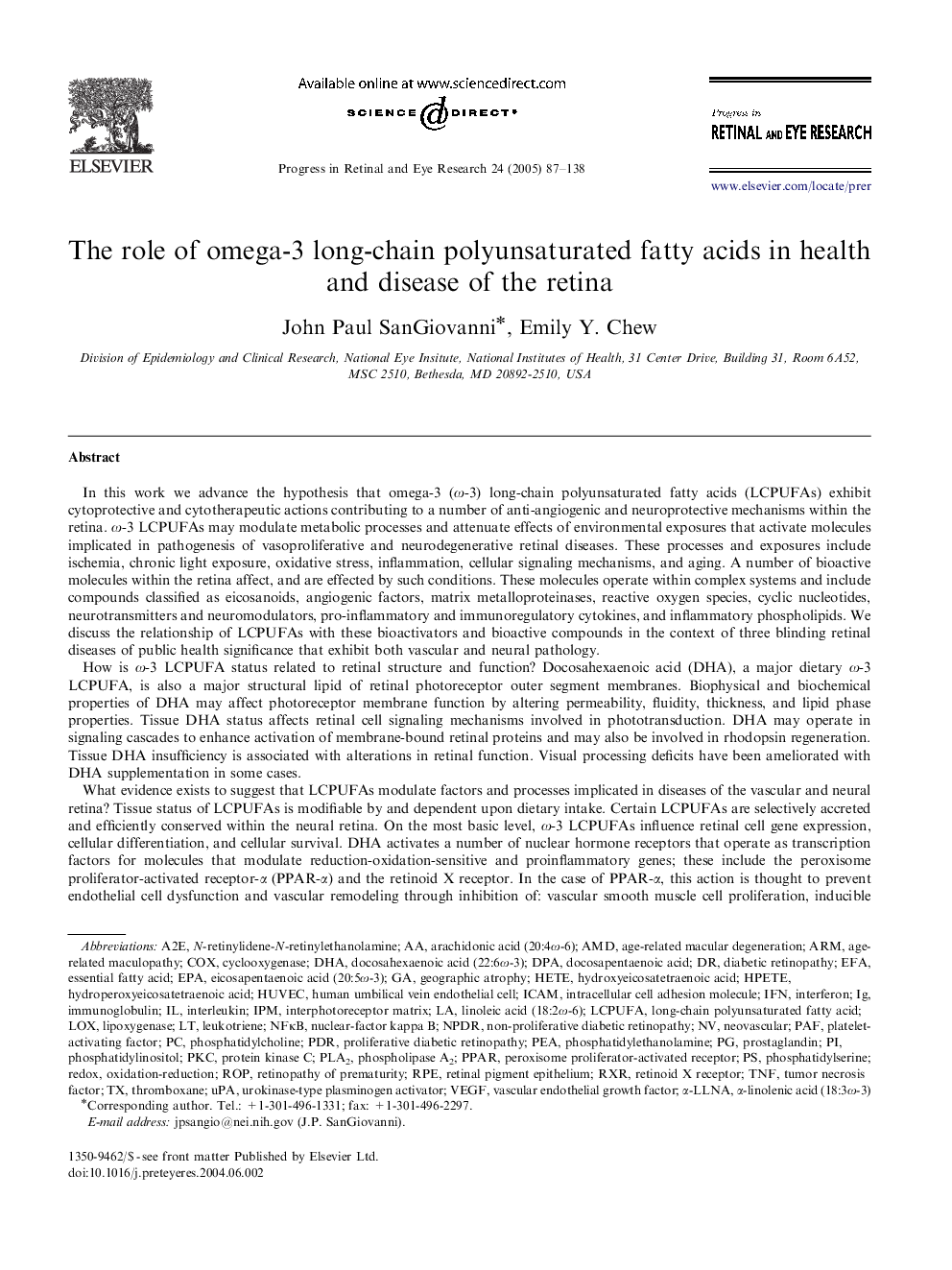| Article ID | Journal | Published Year | Pages | File Type |
|---|---|---|---|---|
| 9348317 | Progress in Retinal and Eye Research | 2005 | 52 Pages |
Abstract
Research on model systems demonstrates that Ï-3 LCPUFAs also have the capacity to affect production and activation of angiogenic growth factors, arachidonic acid (AA)-based vasoregulatory eicosanoids, and MMPs. Eicosapentaenoic acid (EPA), a substrate for DHA, is the parent fatty acid for a family of eicosanoids that have the potential to affect AA-derived eicosanoids implicated in abnormal retinal neovascularization, vascular permeability, and inflammation. EPA depresses vascular endothelial growth factor (VEGF)-specific tyrosine kinase receptor activation and expression. VEGF plays an essential role in induction of: endothelial cell migration and proliferation, microvascular permeability, endothelial cell release of metalloproteinases and interstitial collagenases, and endothelial cell tube formation. The mechanism of VEGF receptor down-regulation is believed to occur at the tyrosine kinase nuclear factor-kappa B (NFκB). NFκB is a nuclear transcription factor that up-regulates COX-2 expression, intracellular adhesion molecule, thrombin, and nitric oxide synthase. All four factors are associated with vascular instability. COX-2 drives conversion of AA to a number angiogenic and proinflammatory eicosanoids. Our general conclusion is that there is consistent evidence to suggest that Ï-3 LCPUFAs may act in a protective role against ischemia-, light-, oxygen-, inflammatory-, and age-associated pathology of the vascular and neural retina.
Keywords
uPARPEEFAPKCROPPPARRetinoid X receptorHUVECAMDPLA2LCPUFAICAMIPMPEANPDRA2ERXRARMPDRintracellular cell adhesion moleculeNeovascularCOXTNFDPAEPANFκBgeographic atrophycyclooxygenasephospholipase A2docosapentaenoic acidhydroperoxyeicosatetraenoic acidhydroxyeicosatetraenoic acidlong-chain polyunsaturated fatty acidEssential fatty acidretinal pigment epitheliumLOXimmunoglobulin interferonIFNinterleukinthromboxaneDHAdiabetic retinopathyProliferative diabetic retinopathyNon-proliferative diabetic retinopathyRetinopathy of prematurityRedoxHuman umbilical vein endothelial cellage-related macular degenerationVascular endothelial growth factorVascular Endothelial Growth Factor (VEGF)Platelet-activating factortumor necrosis factorphosphatidylinositolphosphatidylcholinephosphatidylethanolaminePhosphatidylserineurokinase-type plasminogen activatorLeukotrienelipoxygenaseinterphotoreceptor matrixAge-related maculopathyPAFHPETEHETEProtein kinase Cprostaglandinoxidation-reductionperoxisome proliferator-activated receptor
Related Topics
Life Sciences
Neuroscience
Sensory Systems
Authors
John Paul SanGiovanni, Emily Y. Chew,
